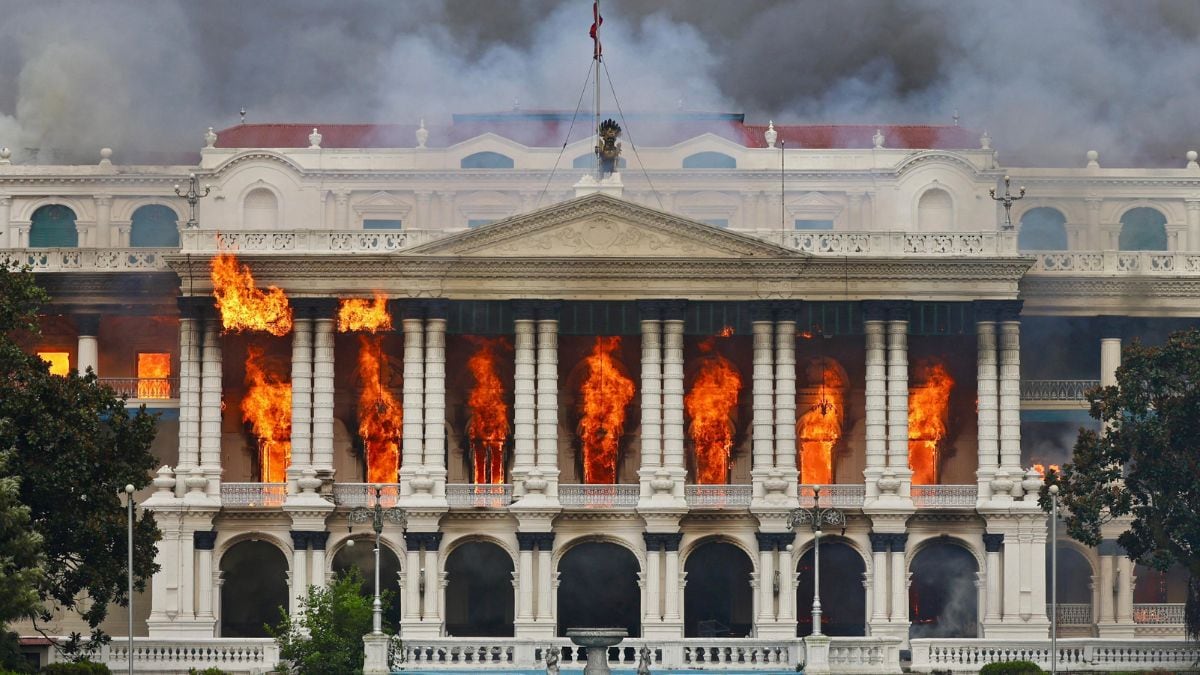Washington: Nearly a million Americans were preparing to spend the Independence Day holiday like the nation’s founders did in 1776, without the conveniences of electricity and air conditioning after several Eastern and Midwestern states were suddenly hit by a summer storm. Out West, raging wildfires forced authorities to cancel fireworks displays. Power outages from Friday’s violent storms left many grumbling that America’s birthday would hardly be a party. Cookouts were cancelled or moved to homes with power. Vacation plans were altered. Even some whose power had been restored said they had run out of steam to celebrate the way they had planned. Friday’s storm arrived with little warning and knocked out power to 3 million homes and businesses in states from West Virginia to Ohio and Illinois. Officials blamed 25 deaths on the storm and its aftermath, and power companies in some places estimated it could be the weekend before everyone’s power is restored. [caption id=“attachment_367780” align=“alignleft” width=“380”]  Fourth of July fireworks are set off on Lake Winnipesaukee, Tuesday, July 3, 2012 in Alton Bay, N.H. AP[/caption] More than 900,000 homes and businesses remained without power early Wednesday. Utility and municipal crews worked through the 4 July holiday to restore power and remove downed tree limbs. As a result, power repairs were taking priority over parties in many parts. At least four planned fireworks displays were cancelled in Maryland because of the outages, with officials saying they couldn’t spare police and fire resources for the festivities. In Rockville, Maryland, officials called off their celebration because trees and wires were blocking two of the three entrances to the college campus where fireworks were planned. Gaithersburg, Maryland, about 30 minutes north of Washington, cancelled its display because a power company is using its planned celebration location, a fairgrounds, as a staging area for repairs. In West Virginia, meanwhile, officials urged people to resist the temptation to set off fireworks at home because the risk of fire is too high. Many brown, crunchy lawns were already potential fuel, but the trees and limbs that fell during the storm have added even more tinder. In other iconic Fourth of July places, though, plans remained unchanged. Fireworks on the National Mall in Washington were going forward. At George Washington’s Mount Vernon estate in Virginia, where power was initially off for 12 hours after the storm, plans for birthday cake and ice cream making were on. And in Colonial Williamsburg, the restored 18th century Revolutionary capital of Virginia, there were plans to celebrate with fifes and drums, musket and cannon fire, and a reading of the Declaration of Independence. In the West, firefighters spent the holiday battling wildfires while rains helped efforts against scores of fires burning across the region, while keeping a nervous eye for fireworks and other hazards. Holiday fireworks were canceled across the region. Colorado officials were calling off holiday displays from Fort Collins to Colorado Springs, while law enforcement was warning of hefty fines for people caught violating personal fireworks bans across the region. Residents in some parched areas were joining police. In one Colorado Springs neighborhood, a homemade sign read, “FAIR WARNING: Anyone using or allowing use of fireworks in this neighborhood will be dealt with harshly! And that doesn’t mean just by the police!” Wildfires in Wyoming, Utah and Colorado sent haze and smoke across Colorado’s Front Range, prompting air-quality health advisories as firefighters warned of growing fires in sparsely populated areas. In Colorado Springs, there was good news in the fight against the most destructive fire in state history. Light rains that fell overnight helped calm the Waldo Canyon Fire, which has scorched 28 square miles (72.5 sq. kilometers), killed two and destroyed almost 350 homes. Firefighters predicted full containment of the fire by Sunday, with more rain, cooler temperatures and higher humidity predicted through the weekend. Both Colorado and Wyoming were continuing a relative cool spell after record heat last week helped prompt tinder-dry conditions. Humidity was higher, too, giving firefighters hope for progress against the blazes. The National Interagency Fire Center in Boise, Idaho, which coordinates wildfire-fighting efforts nationwide, said 45 large fires were burning Wednesday, including 36 fires in nine Western states. In Colorado alone, three fires have destroyed more than 600 homes and killed six residents. AP
More than 900,000 homes and businesses remained without power early Wednesday. Utility and municipal crews worked through the 4 July holiday to restore power and remove downed tree limbs.
Advertisement
End of Article
Written by FP Archives
see more


)

)
)
)
)
)
)
)
)



